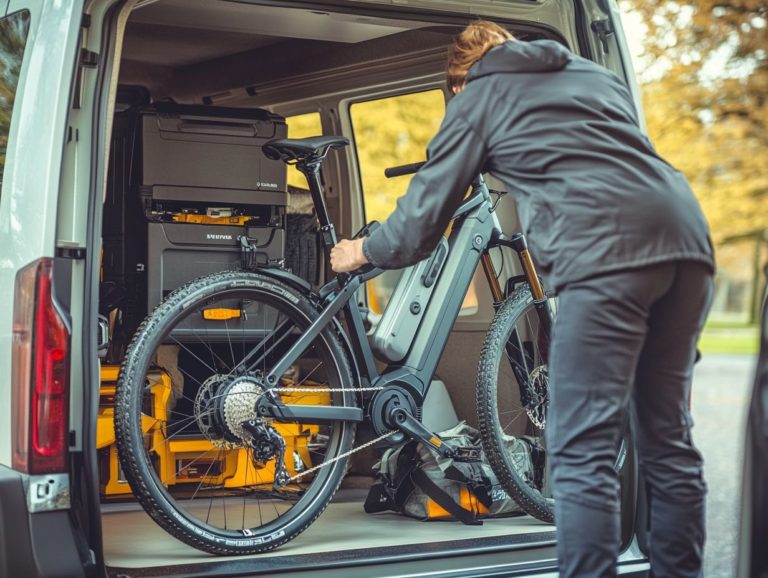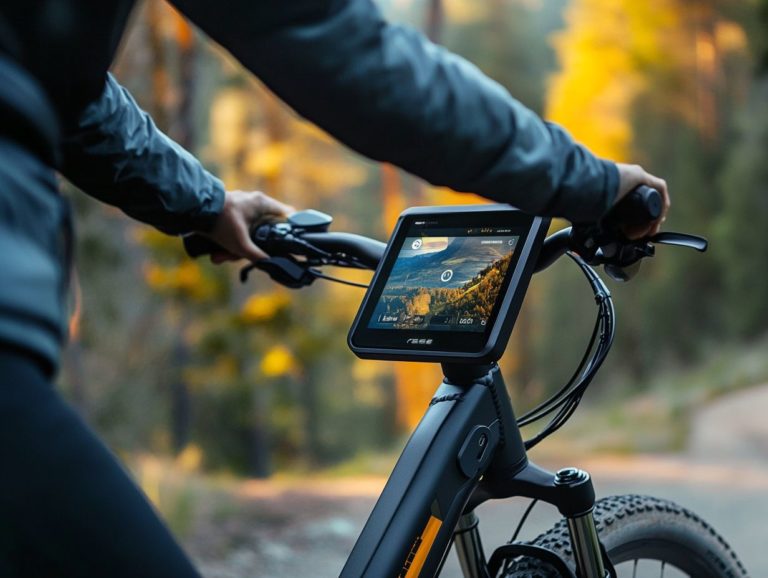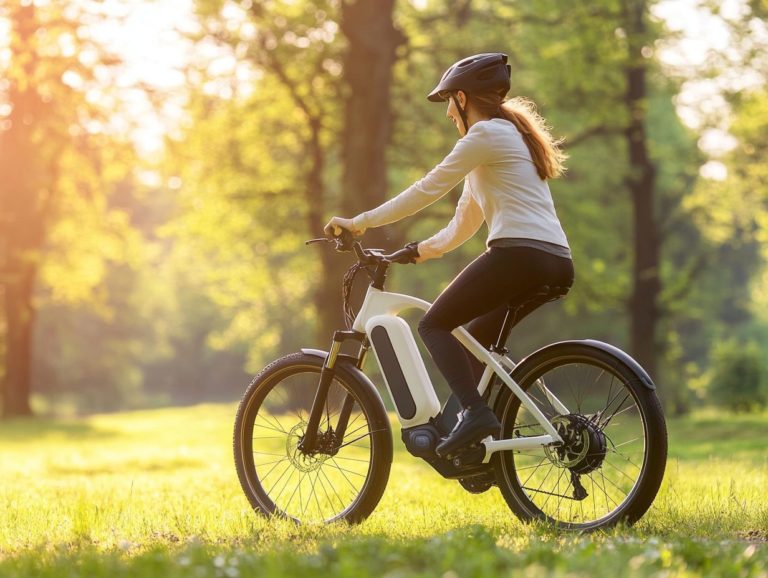Do Electric Bicycles have a Speed Limit?
Electric bicycles present a remarkable fusion of convenience and sustainability. They capture the attention of both commuters and outdoor enthusiasts.
In this article, you ll delve into the complexities of electric bicycles. You will explore the factors that affect their speed, the advantages they offer for commuting and fitness, and important safety tips for riders.
You will also find alternative transportation options for those seeking higher speeds. Whether you re an experienced rider or simply intrigued, exciting insights await you in the world of electric bicycles.
Contents
- Key Takeaways:
- Overview of Electric Bicycles
- Speed Limits for Electric Bicycles
- Factors Affecting Electric Bicycle Speed
- Benefits of Electric Bicycles
- Safety Considerations for Electric Bicycles
- Alternative Options for Faster Speeds
- Frequently Asked Questions
- Do Electric Bicycles have a Speed Limit?
- What is the speed limit for electric bicycles?
- Are there any exceptions to the speed limit for electric bicycles?
- Can I modify my electric bicycle to go faster than the speed limit?
- What happens if I exceed the speed limit on my electric bicycle?
- Do I need a license to ride an electric bicycle within the speed limit?
Key Takeaways:
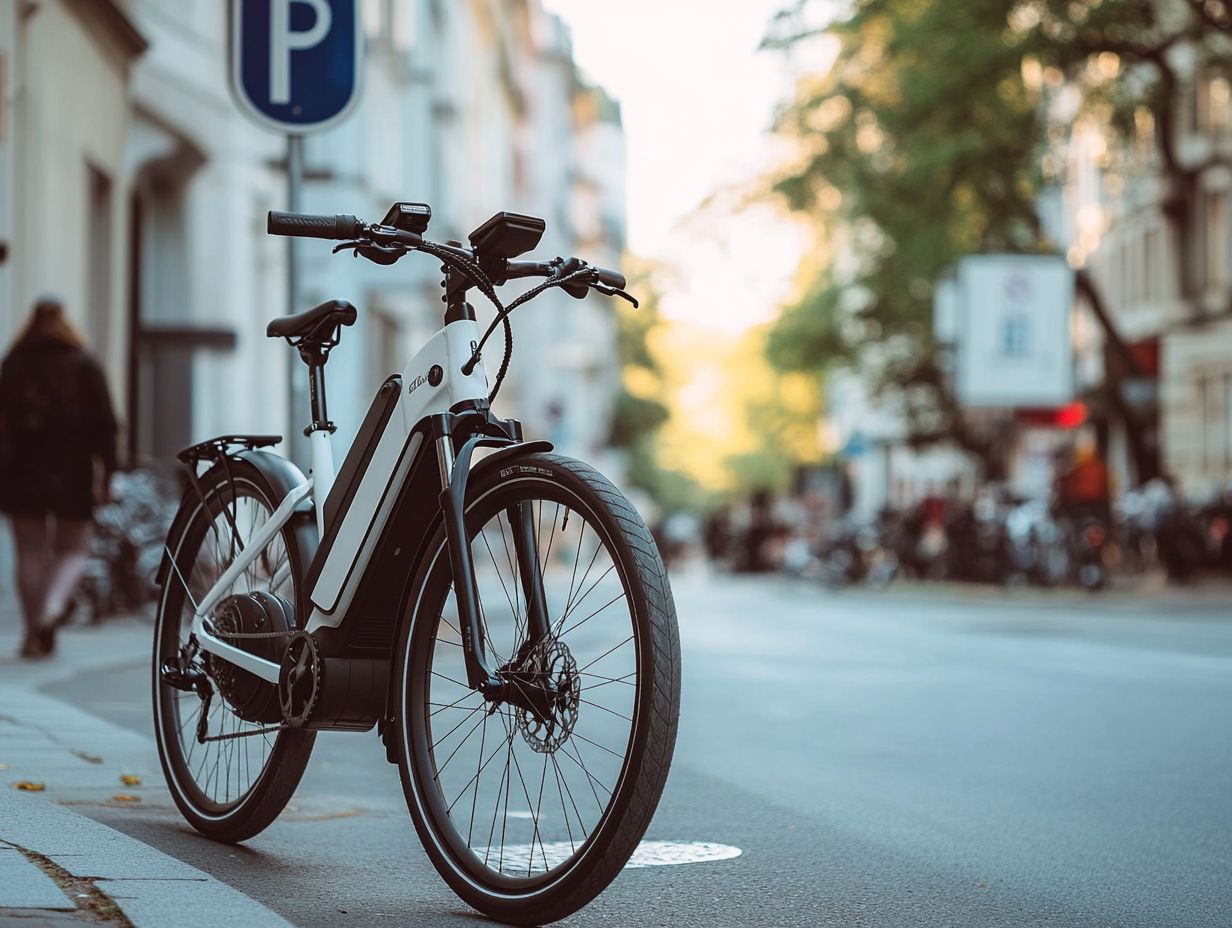
- Electric bicycles are becoming increasingly popular for commuting and exercise due to their ease of use and eco-friendliness.
- The speed limit for electric bicycles varies by country and state, with most having a maximum speed of 20 mph (32 km/h).
- Factors such as battery life and terrain can affect the speed of electric bicycles. It is important to ride safely and responsibly regardless of speed limitations.
Overview of Electric Bicycles
Electric bicycles, or e-bikes as they’re commonly known, are a versatile transportation option that seamlessly blends the convenience of cycling with the benefits of an electric motor.
Their popularity has surged across various states in the U.S., especially in California and New York, where they offer commuters a sustainable alternative to traditional vehicles.
E-bikes are divided into three classes based on how they work: Class 1 has pedal assist only, Class 2 has throttle assist, and Class 3 can go faster but may have more restrictions. With leading brands like Himiway, QuietKat, and Velotric dominating the market, it’s crucial for you to grasp the intricacies of electric bicycle speed limit laws for safe and responsible riding.
What are Electric Bicycles?
Electric bicycles, or e-bikes, are not just regular bikes; they come equipped with an electric motor that enhances your cycling experience. You ll enjoy two main types of assistance: pedal assist, where you still get to pedal, and throttle assist, which lets you engage the motor without lifting a finger.
In terms of motors, e-bikes typically feature two main types: hub motors, nestled in the wheel hub, and mid-drive motors, positioned near the pedals. This variety allows for different riding experiences. For instance, mid-drive motors usually offer superior weight distribution and climbing power, making them perfect for those daring steep terrains.
E-bikes cater to a wide range of riders. Whether you’re a commuter looking for a quicker, less strenuous way to get to work or a recreational cyclist wanting to extend your adventures without the fatigue of traditional biking, there’s an e-bike for you.
With sustainable transportation becoming increasingly important, e-bikes have soared in popularity. They provide an eco-friendly alternative to cars while encouraging an active lifestyle, making them a compelling choice for modern living.
Speed Limits for Electric Bicycles
Speed limits for electric bicycles can differ based on their classification and local regulations. Generally, Class 1 e-bikes are capped at 20 mph, while Class 3 models can reach speeds of up to 28 mph.
It’s essential for you, as a road user, to grasp these speed limits to ensure compliance with safety laws and to steer clear of potential legal fines. Various states, like California and New York, have their own specific regulations regarding e-bikes, including whether electric bicycles are considered motor vehicles, outlining where and how these bikes can be legally ridden. This makes it even more important for you to adhere to local laws.
Understanding Legal Restrictions
Legal restrictions surrounding electric bicycles vary significantly from state to state. California and New York stand out as prime examples of regions with specific e-bike regulations. These laws often govern critical factors such as how fast your bike can go, where you can ride, and the essential safety equipment required for riders.
In California, the regulations categorize e-bikes based on their motor power. This grants users the freedom to navigate various bike lanes and paths, an advantage for urban commuters seeking efficiency. If you’re curious about the classifications, you can learn more about different classes of electric bicycles. On the other hand, New York enforces its own set of guidelines, frequently imposing stricter rules on where e-bikes are allowed, particularly in densely populated areas.
Some states may require different types of safety gear, like helmets or reflective vests, to ensure rider safety. Understanding these diverse laws for electric bicycles is essential for anyone eager to enjoy the convenience and efficiency e-bikes offer while remaining compliant with local laws.
Factors Affecting Electric Bicycle Speed
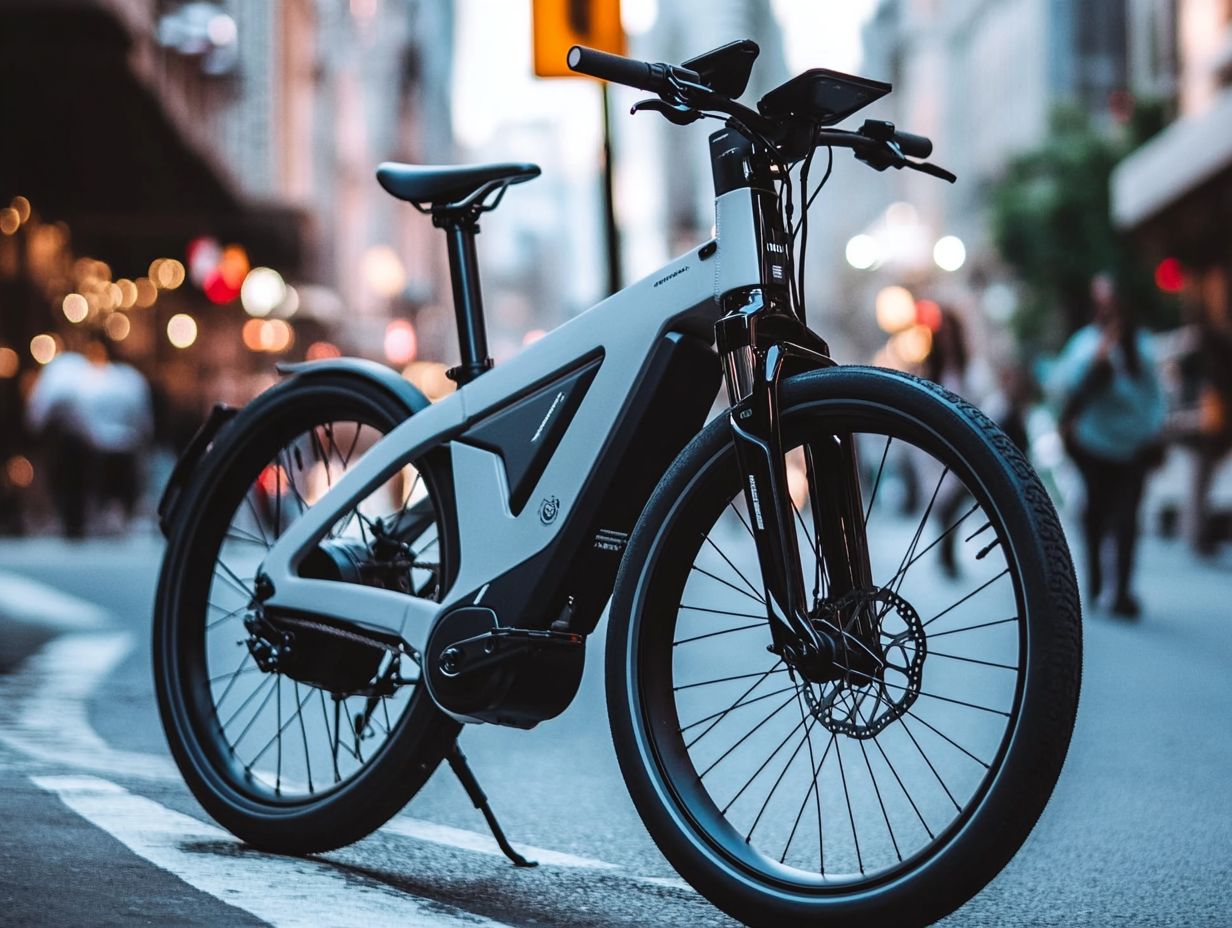
The speed of your electric bicycle is shaped by various factors, including battery life, terrain, motor power, and the type of assistance you choose, whether it s pedal assist or throttle assist. Knowing these factors helps you ride better and tackle diverse environments effectively.
For instance, a steep incline can impede your speed, while a flat surface can elevate your performance. Therefore, it s vital to take these considerations into account for a more efficient and enjoyable commute.
Battery Life and Terrain
Battery life is a crucial factor in determining how fast and how far you can go on an electric bike. This is especially true when you encounter different types of terrain. On flat roads, you may find yourself zipping along with ease, thanks to minimal resistance.
However, tackling rough or hilly terrains can quickly drain your battery and slow you down. Moreover, elements like wind resistance and rider weight can further complicate the dynamics between terrain and battery performance.
For instance, climbing steep inclines requires more power, which could cut your ride short if you’re exploring challenging landscapes. Understanding how fast electric bicycles can go and how terrain affects both your speed and distance is vital for you as an electric bicycle enthusiast.
This knowledge not only aids in planning your routes but also ensures that you make the most of your battery life. By selecting the right electric bike tailored to your specific environment, you can enhance your riding experience while effectively addressing any potential limitations.
Benefits of Electric Bicycles
Electric bicycles present a wealth of advantages, positioning them as an appealing choice for both commuting and exercise. They offer an eco-friendly mode of transportation, enabling you to reduce your carbon footprint while effortlessly navigating shorter distances without the stress of traffic.
Moreover, e-bikes especially electric cargo bikes encourage physical activity, seamlessly integrating exercise into your daily routine. In this way, they emerge as a contemporary solution to the demands of urban transportation.
Advantages for Commuting and Exercise
Utilizing electric bikes for your commute brings a host of distinct advantages, including reduced travel time and a boost in physical activity. With the choice between pedal assist and throttle assist, you can tailor your ride to match your preferences perfectly.
This flexibility allows you to navigate city streets with efficiency while still enjoying a healthy form of exercise. Beyond the practical perks, electric bicycles offer a sustainable transportation solution that significantly cuts down on carbon emissions compared to traditional vehicles. However, it’s important to consider weight limits for electric bicycles to ensure safety and performance.
This eco-friendly choice not only helps alleviate traffic congestion but also encourages you to incorporate more movement into your daily routine. E-bikes enable you to conquer various terrains effortlessly, making them ideal for diverse commutes or leisurely rides.
The fusion of speed and exercise promotes a balanced lifestyle. This enhances cardiovascular health and overall well-being, transforming your everyday journeys into invigorating experiences. Don t miss out on the benefits of e-bikes!
Safety Considerations for Electric Bicycles
Safety considerations for electric bicycles are paramount. They ensure the well-being of both riders and fellow road users. It’s essential to comply with helmet laws, which can vary by state. This compliance helps mitigate the risks associated with riding at higher speeds.
Being proactive in following safety guidelines is crucial. This means wearing appropriate protective gear and understanding traffic laws to avoid legal fines while enhancing your riding experience.
By adopting safe riding practices, you can significantly lower the chances of accidents and injuries. This paves the way for more enjoyable and secure journeys.
Tips for Riding Safely and Responsibly
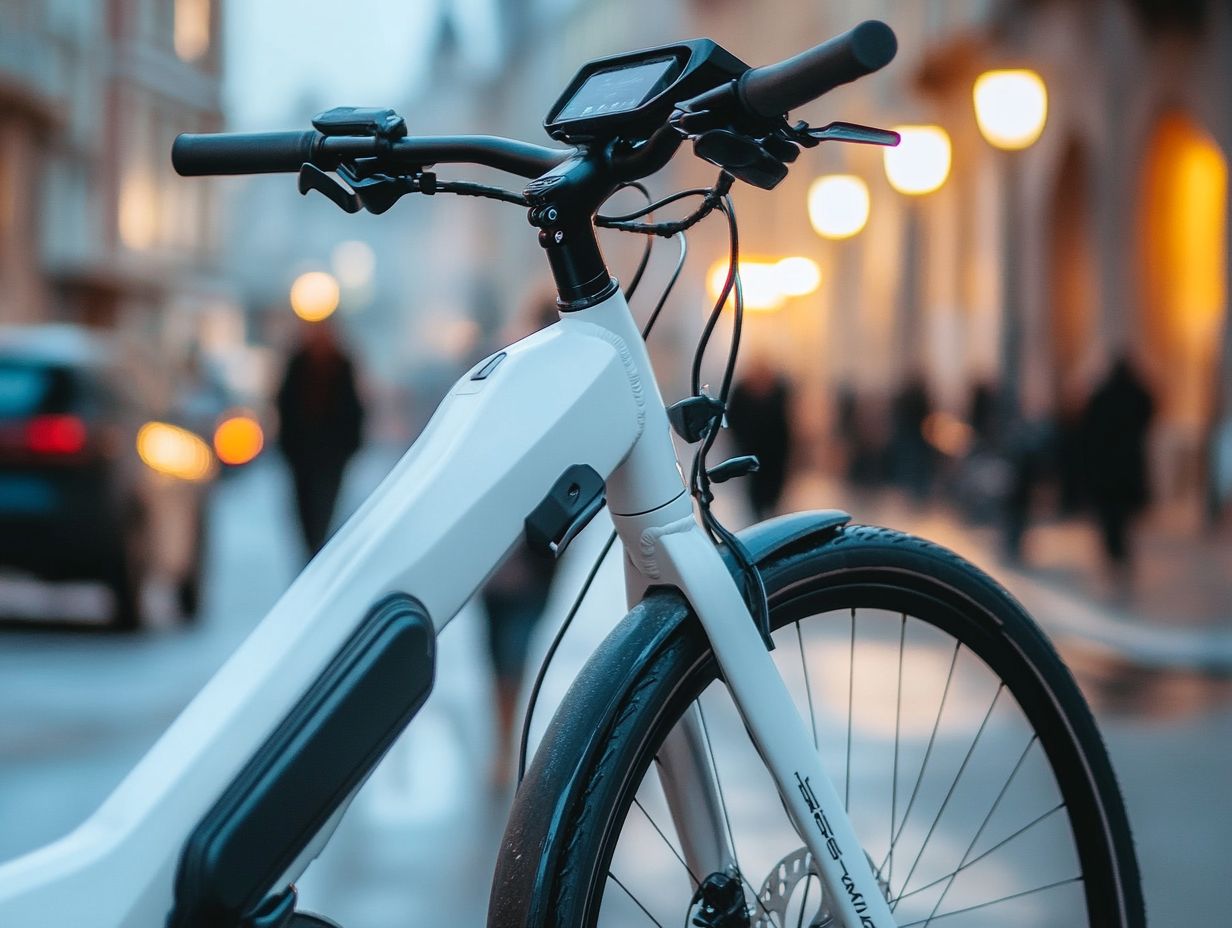
To ride electric bicycles with safety and responsibility, adhere to helmet laws and understand traffic regulations. This awareness protects you and ensures the safety of everyone sharing the road.
Always make it a point to be visible, use proper hand signals, and maintain a safe distance from vehicles. These actions reduce the risk of accidents.
Avoid distractions like checking your smartphone while cycling. Staying focused on the road is vital. Choosing clothing that enhances your visibility, especially in low-light conditions, can significantly lower the chances of mishaps.
Stay informed about local laws regarding electric bicycles, including speed limits and designated paths. This knowledge is crucial for safe navigation. Remain alert to pedestrians and other cyclists, using defensive riding techniques to anticipate potential hazards.
By taking these steps, you contribute to creating a safer environment for everyone on the roadway.
Alternative Options for Faster Speeds
For anyone seeking speeds that electric bicycles simply can’t match, exploring alternatives like mopeds presents a compelling option. While e-bikes offer numerous benefits for daily commuting, mopeds appeal to those who value speed and efficiency.
Mopeds frequently achieve maximum speeds that exceed the legal limits of many e-bike categories. Understanding the differences between these transportation modes is crucial for those looking to elevate their travel experience.
Exploring Other Modes of Transportation
Exploring other modes of transportation, such as mopeds, reveals options that often offer higher maximum speeds compared to electric bikes.
While electric bikes are celebrated for their eco-friendliness and versatility, mopeds present an enticing alternative for those who prioritize speed and a more relaxed ride.
Mopeds typically provide a smooth riding experience. They blend ease of handling with a powerful engine that enables quick acceleration, making them appealing for commuters eager to zip through bustling urban landscapes efficiently.
Consider the convenience factor as well. While electric bikes require regular charging, mopeds can often cover longer distances without the hassle of frequent stops. This makes them perfect for longer journeys.
Preferences will vary among riders. If you value a hassle-free ride without the constant concern for battery life, mopeds may align more closely with your lifestyle choices.
Frequently Asked Questions
Do Electric Bicycles have a Speed Limit?
Yes, electric bicycles do have a speed limit imposed by law.
What is the speed limit for electric bicycles?
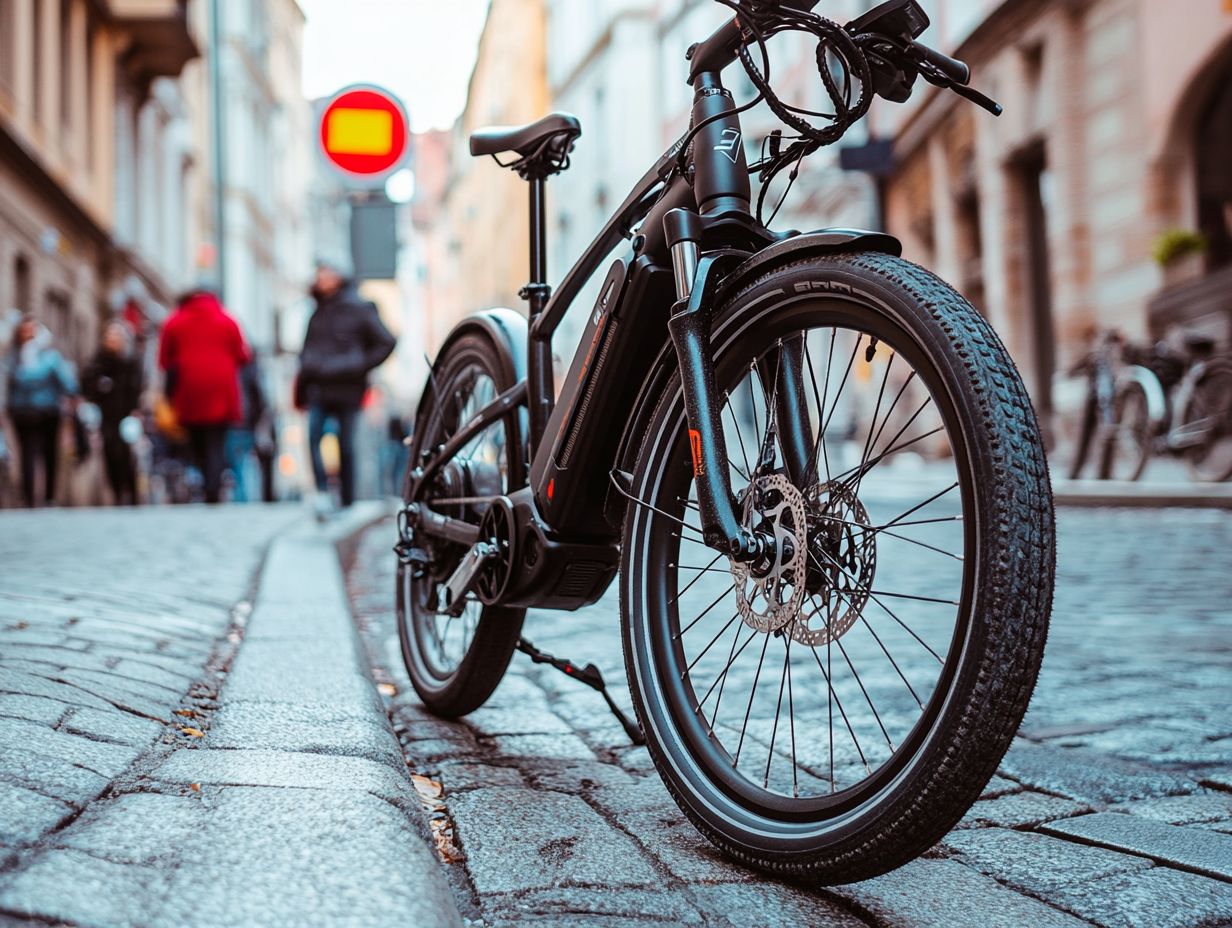
The speed limit for electric bicycles varies depending on the country or state. In most places, it is 20 mph or 32 km/h.
Are there any exceptions to the speed limit for electric bicycles?
Yes, some places may have different speed limits for electric bicycles based on their motor power or type. It is important to check local laws and regulations.
Can I modify my electric bicycle to go faster than the speed limit?
It is not recommended to modify your electric bicycle to exceed the speed limit. Doing so may be illegal and unsafe for yourself and others.
What happens if I exceed the speed limit on my electric bicycle?
Exceeding the speed limit on an electric bicycle can lead to fines or other penalties, similar to traditional motor vehicles.
Follow the speed limit to ensure your safety and that of others around you.
Do I need a license to ride an electric bicycle within the speed limit?
Most of the time, you don t need a license to ride an electric bicycle if you stay within the speed limits.
Always check with local authorities to confirm any licensing rules that may apply in your area.


